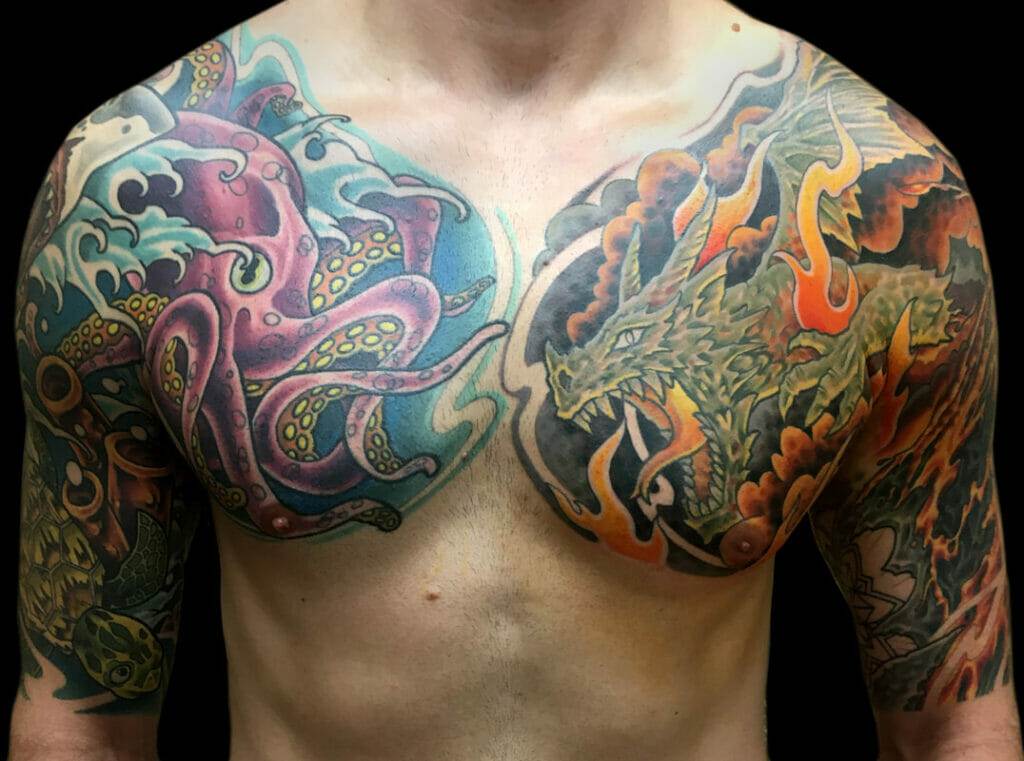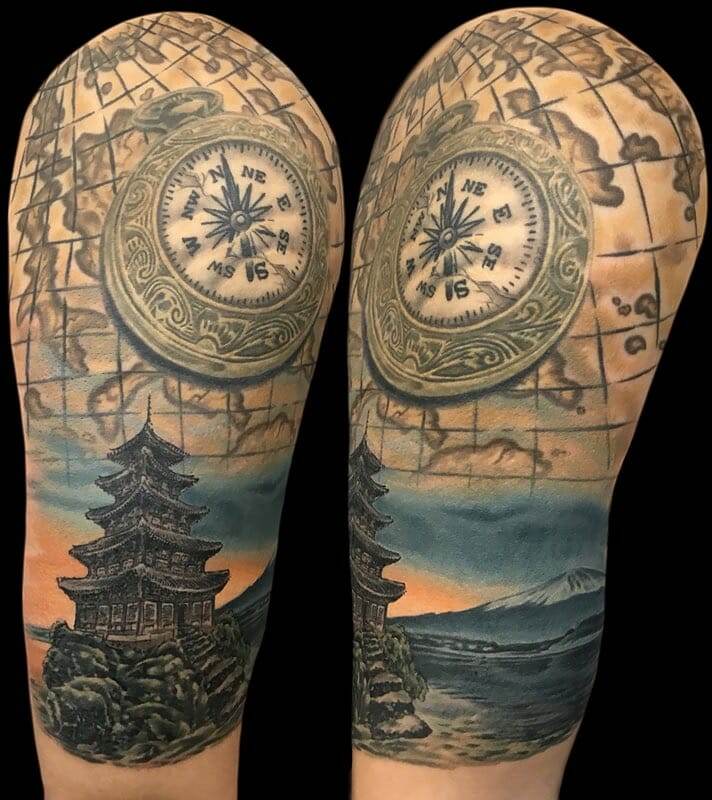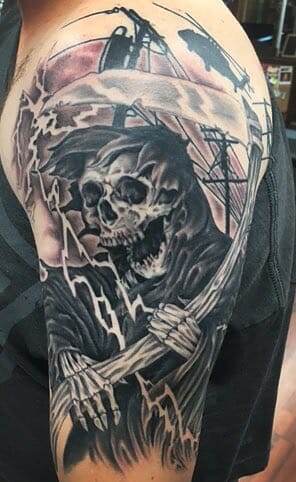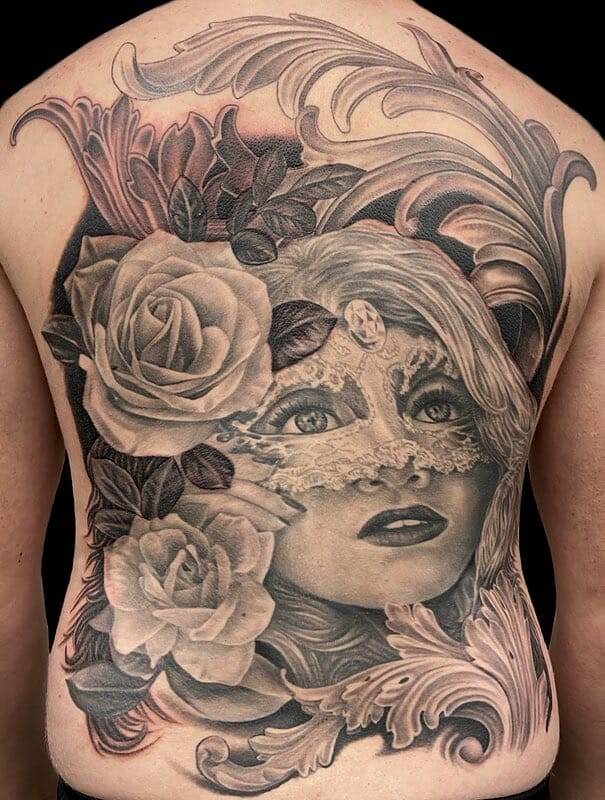Tattooing has a rich and diverse history that dates back thousands of years. The practice of tattooing can be traced back to ancient civilizations such as the Egyptians, Greeks, and Romans, who used tattoos for various purposes including religious rituals, identification, and decoration. Over time, tattooing has evolved into a respected art form that allows individuals to express their creativity and personal style.
The evolution of tattooing as an art form has been influenced by various factors, including advancements in technology and changes in societal attitudes towards tattoos. In the past, tattoos were often associated with criminality or rebellion, but today they are widely accepted as a legitimate form of self-expression. Tattoo artists have honed their skills and techniques, pushing the boundaries of what is possible in terms of design and execution.
Understanding the Importance of Custom Designs
Custom tattoos are unique designs that are created specifically for an individual. They are personalized pieces of art that reflect the wearer’s personality, interests, and experiences. Unlike flash tattoos, which are pre-designed images that can be chosen from a catalog or displayed on the walls of a tattoo shop, custom tattoos are one-of-a-kind creations that cannot be replicated.
There are several benefits to having a custom tattoo. Firstly, it allows the wearer to have a design that is truly unique and meaningful to them. It can be a way to commemorate a loved one, express personal beliefs or values, or simply showcase their individuality. Custom tattoos also give the artist an opportunity to showcase their creativity and artistic skills, as they work closely with the client to bring their vision to life.
The Consultation Process: Discussing Your Design Ideas
Before getting a custom tattoo, it is important to schedule a consultation with the chosen artist. This is an opportunity for you to discuss your design ideas and collaborate with the artist to create a unique piece of art. To make the most of your consultation, it is helpful to come prepared.
Before the consultation, gather any reference images or inspiration that you have collected. This can include photographs, drawings, or even words that describe the elements you want in your tattoo. Be prepared to explain the meaning behind your design and any specific details or elements that are important to you.
During the consultation, effective communication is key. Clearly express your ideas and expectations to the artist, but also be open to their suggestions and expertise. They may have insights or recommendations that can enhance your design. Don’t be afraid to ask questions or address any concerns you may have. The consultation is a collaborative process, so it is important to establish a good rapport with the artist.
Sketching Your Custom Tattoo: Bringing Your Ideas to Life
Once you have discussed your design ideas with the tattoo artist, they will begin the process of sketching your custom tattoo. A good sketch is essential as it serves as the blueprint for the final tattoo. The artist will take into consideration your ideas, preferences, and any reference images you provided to create a design that meets your expectations.
Collaboration between the artist and the client is important during the sketching process. The artist may present you with a rough sketch or several options to choose from. This is your opportunity to provide feedback and make any changes or revisions to the design. It is important to be honest and clear about your preferences, as this will ensure that the final tattoo is exactly what you envisioned.
Once the sketch is finalized, the artist will create a stencil of the design. This stencil will be used as a guide during the tattooing process to ensure that the design is applied accurately and proportionally to the skin.
The Importance of Placement: Finding the Perfect Spot for Your Tattoo

Choosing the right placement for your tattoo is just as important as choosing the design itself. The placement of a tattoo can greatly impact its overall appearance and how it interacts with the body. There are several factors to consider when deciding on the placement of your custom tattoo.
One factor to consider is the size and shape of the tattoo. Larger tattoos may require more space and may be better suited for areas such as the back, chest, or thigh. Smaller tattoos can be placed on areas such as the wrist, ankle, or behind the ear.
Another factor to consider is your body shape and size. Certain designs may look better on certain body types. For example, a long, vertical design may be more flattering on someone with a tall and slender frame, while a circular design may complement someone with a curvier figure.
The meaning and symbolism of the tattoo can also influence its placement. Some people choose to place their tattoos in visible areas as a way to showcase their beliefs or values, while others prefer more discreet placements for personal or professional reasons.
Preparing for Your Tattoo Session: What to Expect
Before your tattoo session, it is important to follow any pre-tattoo care instructions provided by the artist. This may include avoiding alcohol or blood-thinning medications, moisturizing the skin, and staying hydrated. It is also important to get a good night’s sleep and eat a healthy meal before your appointment to ensure that you are in the best possible condition for the tattooing process.
When preparing for your tattoo session, it is important to bring any necessary items with you. This may include a valid ID, payment for the tattoo, and any reference images or inspiration that you discussed with the artist during the consultation. It is also a good idea to wear comfortable clothing that allows easy access to the area where the tattoo will be placed.
During the tattoo session, it is important to communicate with the artist if you are experiencing any discomfort or if you need a break. They will do their best to make you feel as comfortable as possible throughout the process. It is also important to follow any aftercare instructions provided by the artist to ensure proper healing and minimize the risk of infection.
The Tattooing Process: Techniques and Tools Used
The tattooing process involves several steps and requires specialized tools and techniques. The most common tool used by tattoo artists is a tattoo machine, also known as a tattoo gun. This machine uses needles to puncture the skin and deposit ink into the dermis, creating a permanent design.
There are different types of tattoo machines, including coil machines and rotary machines. Coil machines use electromagnetic coils to move the needles up and down, while rotary machines use a rotating motor to move the needles in a circular motion. Both types of machines have their own advantages and are used by different artists depending on their preference and style.
Hygiene and safety are of utmost importance during the tattooing process. Reputable tattoo artists follow strict sanitation practices to prevent the spread of infections and diseases. They use single-use needles and disposable materials whenever possible, and they sterilize their equipment using autoclaves or other approved methods.
Aftercare: Taking Care of Your New Tattoo
After getting a tattoo, proper aftercare is essential to ensure proper healing and to maintain the integrity of the design. The artist will provide you with specific aftercare instructions, but there are some general guidelines that should be followed.
Firstly, it is important to keep the tattoo clean and moisturized. Gently wash the tattoo with mild soap and water, then pat it dry with a clean towel. Apply a thin layer of fragrance-free moisturizer or tattoo aftercare ointment to keep the skin hydrated and prevent it from drying out.
It is also important to avoid exposing the tattoo to excessive moisture or sunlight during the healing process. Avoid swimming, hot tubs, saunas, and prolonged exposure to direct sunlight. It is also important to avoid picking or scratching at the tattoo, as this can cause scarring or infection.
During the healing process, it is normal for the tattoo to scab and peel. This is a natural part of the healing process and should not be picked or scratched. It is important to let the scabs and peeling skin fall off naturally to avoid damaging the tattoo.
Touch-Ups and Maintenance: Keeping Your Tattoo Looking Great
Over time, tattoos may fade or lose their vibrancy. This is a natural part of the aging process and can be influenced by factors such as sun exposure, skin type, and the quality of the ink used. To keep your tattoo looking great, it may be necessary to schedule touch-ups.
The timing of touch-ups will vary depending on several factors, including the size and location of the tattoo, as well as how well it was cared for during the healing process. It is best to consult with your tattoo artist to determine when a touch-up may be necessary.
In addition to touch-ups, there are several ways to care for your tattoo long-term. Avoid exposing the tattoo to excessive sunlight, as this can cause fading. Apply sunscreen with a high SPF to protect the tattoo when it is exposed to the sun. Moisturize the tattoo regularly to keep the skin hydrated and prevent it from drying out.

The Beauty and Meaning Behind Custom Tattoos
Custom tattoos are a beautiful and meaningful form of self-expression. They allow individuals to showcase their unique personality, beliefs, and experiences through art. The process of getting a custom tattoo involves collaboration between the artist and the client, resulting in a one-of-a-kind design that is truly personal.
The artistry and skill involved in creating custom tattoos should not be underestimated. Tattoo artists are highly trained professionals who have honed their craft over many years. They have the ability to transform an idea or concept into a work of art that will be cherished for a lifetime.
If you are considering getting a tattoo, I encourage you to explore the world of custom tattoos. Take the time to research tattoo artists in your area, schedule consultations, and discuss your design ideas. Embrace the beauty and meaning behind custom tattoos and let your body become a canvas for self-expression.



